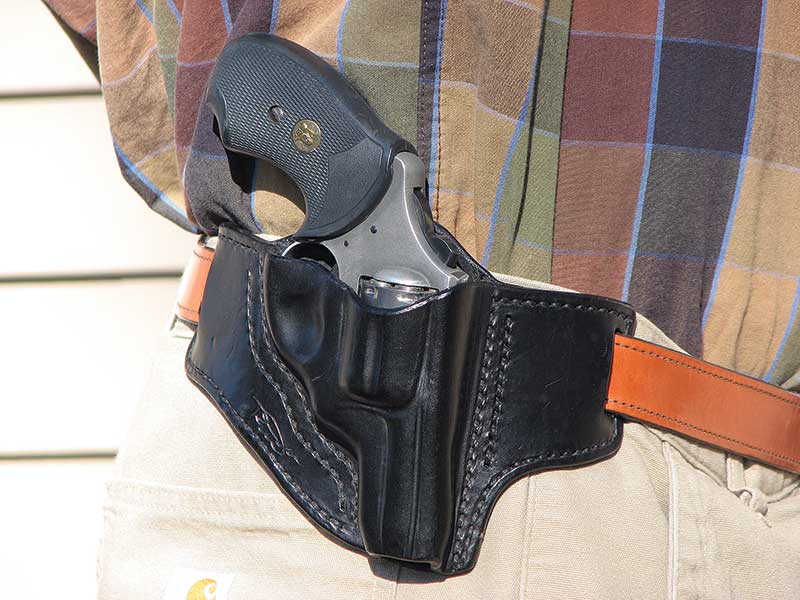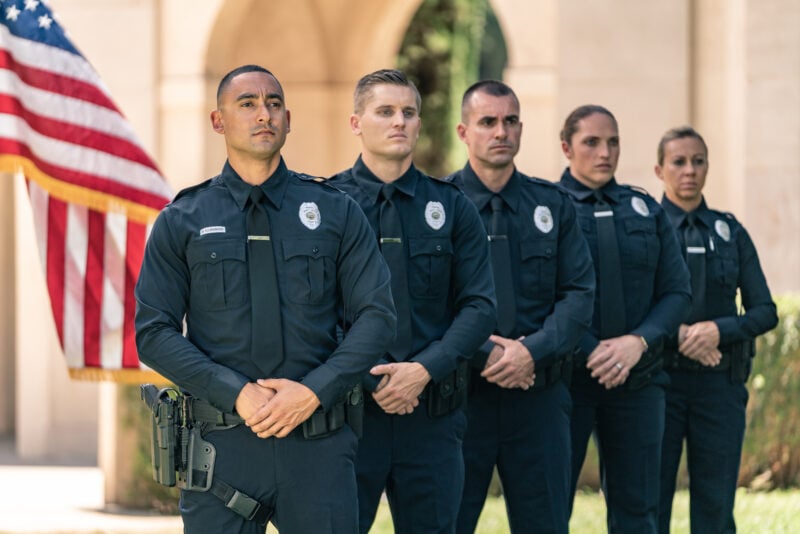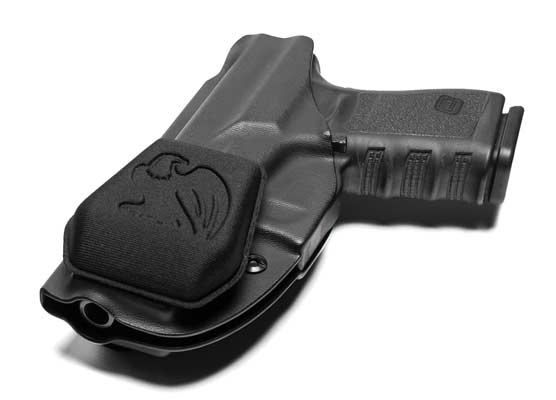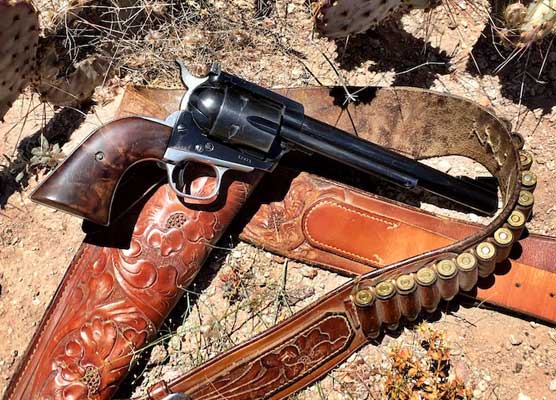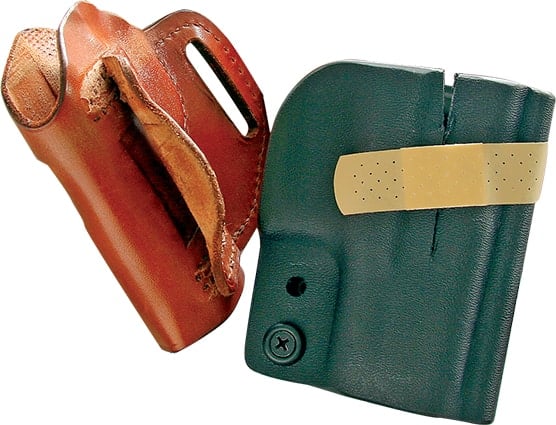Holster Mistakes
You Will Make
Unless You Read This...
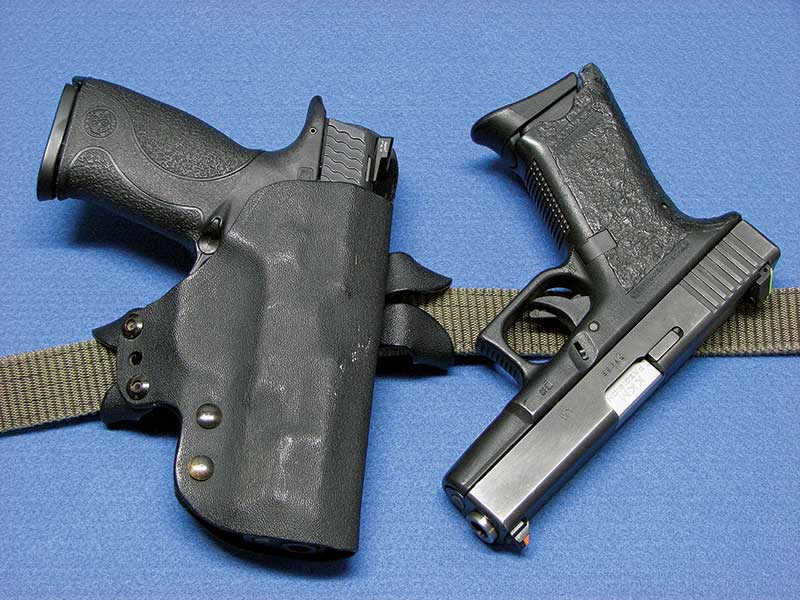
Note the gentle cant of the holstered pistol (in a FIST K-1 holster) making for a natural draw stroke.
The gun is also carried low, putting the weight of the magazine near the belt. By contrast, the more
severe but commonly-found cant of the Glock makes the draw-stroke less natural for most people.
Proper belt is a Wilderness Frequent Traveler (green, 1.25" width).
For decades I’ve said it’s hard to buy a bad gun and easy to buy a bad holster. If you buy a handgun from a major manufacturer you are very unlikely to get bad gun. In general you’ll wind up with a serviceable self-defense weapon. On the other hand, it can be a challenge to find a holster just right for you and your lifestyle. Most people wind up with drawers full of holsters before they find the right one. Here’s a few things to keep in mind.
Many holsters ride too high above the belt, which makes for an unnatural draw-stroke. It’s been alleged high-ride holsters conceal better under a shorter jacket than a normal-ride holster, but really the difference is small. High-ride holsters also allow a short gun to flop away from the body. A normal-ride holster, in which the belt crosses the trigger, will suit most people better most of the time.
Many holsters are canted too far forward. A forward cant in excess of 15 degrees can aid in concealment a little by pulling the gun’s butt forward, but a proper choice of a concealment garment will usually do the same thing. A gun canted too far forward can be very unnatural to draw from, and often thrusts the butt into a rib bone. Most (but not all) experienced people wind up preferring a straight-drop holster or one with only a very slight cant.

The best holster in the world is useless without a properly reinforced and exactly
size-matched belt. Here’s a “The Beltman” custom belt matched neatly with a Tauris
Holsters LLC CC Snap Mount rig for a J-frame. You simply can’t go wrong when you
go to this sort of quality. Gun is custom J-frame by Gemini Customs.
Don’t Go Cheap
Many people cheap-out when buying a holster. While the gun provides the capability to defend yourself, it’s the holster allowing that gun to be with you when you need it. If you don’t have a good holster you either won’t carry the gun, or you won’t be able to draw it effectively. Its false logic to say “I just spent $500 on a gun, I’ll be damned if I’ll pay another $85 for a holster when I can buy one for $15.” It’s the old adage: “Ten dollar head? Then buy a $10 helmet.”
Let’s be clear about this too: a proper, purpose-designed gun belt is essential — essential, not nice to have — if you are to carry a holstered handgun effectively. A holstered gun isn’t an object most people carry, and therefore most belts — even sturdy wok belts — don’t properly support the weight of the gun, nor provide the leverage needed to keep it from flopping and shifting about. A proper belt is stiff enough to do this yet comfortable enough to actually wear, which is a bit of a trick to achieve. A proper gun belt is exactly the width of the slots or loops on your holster; not approximately their width. You will have to mate your holster and belt carefully and it’s not a mix-n-match proposition.
It’s Not Fashion
Too many people will buy a “cool-looking” holster rather than one that works for them. Shoulder holsters and ankle holsters and other exotica have their place, but they are seen on TV and in the movies a lot more than they are seen in use by people who know what they’re doing. The strong-side hip holster (either outside-the-waistband, or inside-the-waistband) is the traditional holster for a reason. It’s comfortable, concealable and efficient and natural to draw from. It’s the place most professionals carry their concealed handgun if they have a choice. Start with one of these, and then try another style only if this traditional choice has shortcomings for you.

